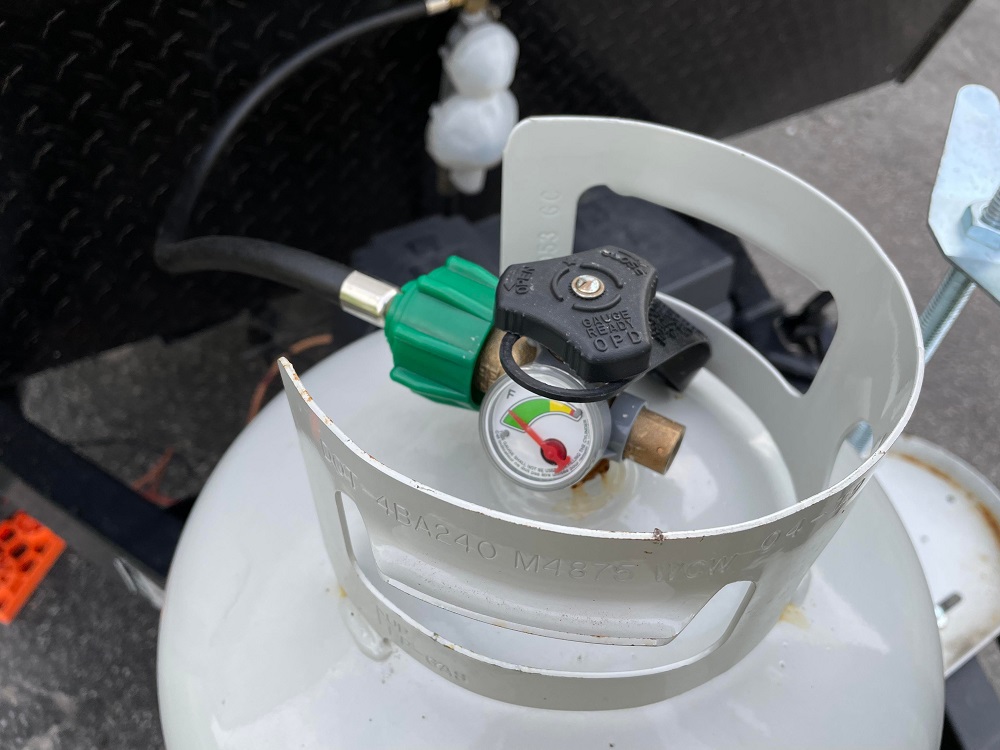Dust off the camper, RVers!
It’s time to get ready for another season of road tripping to provincial parks.
With help from our friends at Wayfarer, we’ve put together an essential checklist to prep your RV for the coming season:
1. Check your battery power
RV batteries lose an average of 10% of their power each month when sitting in storage.

Before heading out to your favourite park, make sure to charge each battery to 100% and ensure they have the correct water levels.
If you had to remove and store any batteries over the winter, test that you have reconnected them correctly before starting out on your journey.
2. Are your tires properly pressured?
Batteries are not the only part of your RV to lose power while it sits in storage.
Each of your tires can lose a significant amount of air pressure, making your RV dangerous to drive.

Use a high-quality tire inflation gauge to check the air pressure and adjust the pressure in each tire. You may need to consult the owner’s manual to determine the manufacturer’s recommended air pressure based on your load weight.
Poorly inflated tires can cause a wide range of problems, including:
- poor steering and handling
- uneven wear
- excessive heat build-up
- tread wear
Ignoring these issues puts you at considerable risk of tire failure and a serious accident on the road.
3. De-winterize your RV
If you winterized your tanks before putting your RV into storage in the fall, it’s time to reverse the process.
The first thing you need to do is connect one end of your hose to the RV and the other to your water supply.

You can now complete each of these steps:
- Run water through the entire system continuously to remove every trace of anti-freeze
- Flush your outside shower hose if you have one
- Drain the remaining water from your freshwater tank (if you think it might have any anti-freeze in it)
- Turn the water pump on and add fresh, potable water. Turn on every faucet in your RV and let the water run until it comes out completely clear
- Turn off all faucets and close the pump
- Pour potable water into your water heater tank and flush it out with fresh water. You should not have any anti-freeze remaining in the water at this point
- Replace your water filter cartridge (if your RV requires one)
Once you have finished each of these steps, you’ll still need to check for water leaks.
Do this by grabbing a flashlight and turning on the water pump.

The water will become pressurized, and the pump should stop. Shine the flashlight underneath sinks, cabinets, and around toilets to see if you spot any leaks.
Take care to repair any water leaks before heading out in your RV for the first time.
4. Are your appliances A-OK?
If any tanks or LP (liquefied petroleum) gas cylinders have remaining gas, open the gas supply and check their operation.
The water heater tank should be full of water before you test the water heater.

If you have any LP gas appliances that need repair, bring them to an authorized RV service shop. The technicians servicing your RV should also complete a leak test and operating pressure test before giving the go-ahead to use your appliances.
Keep in mind that the odour of LP gas attracts insects that may build nests inside of your appliance. These nests can prevent appliances from operating properly.
Look for any signs of insect nests before turning on appliances for the first time this season.
A few more checks
We’ve covered just a few of the items you want to check on your RV this spring.
Don’t forget to also look at your:
- engine fluids and gas
- plumbing system
- power generator
- safety equipment, including fire extinguisher, carbon monoxide detector, gas leak detector, and smoke detector
- seams and sealing
If you ever feel unsure if your RV is operating correctly, or that you have the skills to repair it, don’t hesitate to bring your vehicle in for professional servicing.
It’s better to be safe than sorry!



